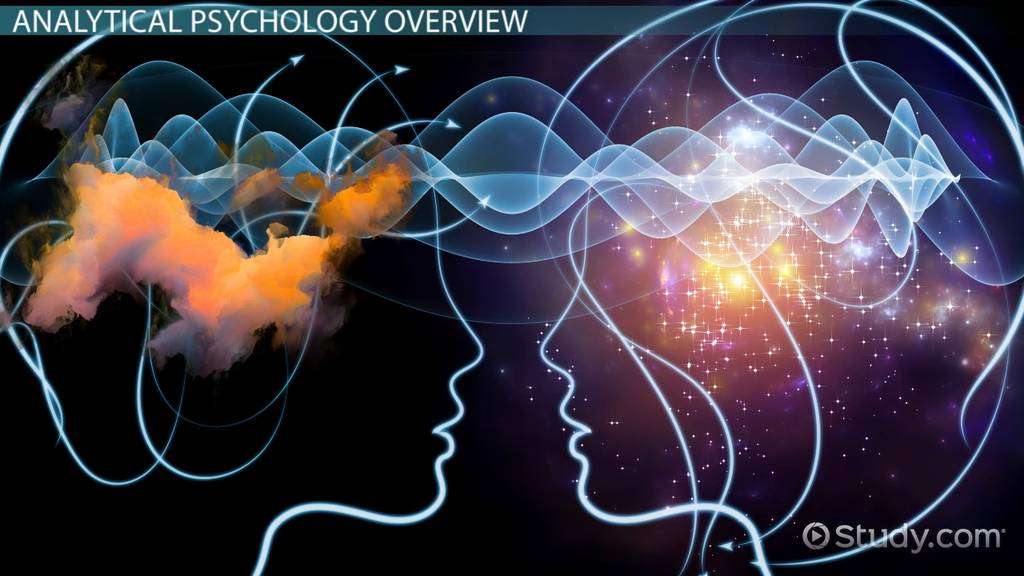History of Analytical Psychology
Sigismund Schlomo Freud and Carl Gustav Jung first met in Vienna, Austria in the year 1907. Freud was about 19 years older than Jung, who was so enthralled with his teacher it is reported they spent over 12 hours in deep conversation. About six years later in 1913, the relationship between Sigmund Freud and Carl Jung saw the former intending to pass on the mantle of the leader of psychoanalysis to the latter.
However, disagreements over some of the specifics of Freud’s theories led to Jung breaking off and forming his own school of thought. Analytical psychology has the underlying goals of the individual moving toward increased self-knowledge, searching for various meanings in their dreams as well as creative work, and making their human unconscious known.
In 1955, the International Association of Analytical Psychology (IAAP) was founded by a group of Carl Jung’s actual associates to carry on his legacy of teachings.
Analytical Theory
While Freud’s theory involved the:
- Conscious
- Preconscious
- Unconscious
Jung divided the human psyche into:
- Collective unconscious
- Personal unconscious
It is clear that both Freud and Jung taught that behavior was influenced by repressed human emotions, but Jung believed dreams reflected human aspects far beyond just desire. Furthermore, while Freud rejected both religion along with spirituality in his teachings, despite the fact he was raised in the Jewish faith, Jung embraced the supernatural instead.
One professional misfortune took place due to Jung ignoring Freud’s advice. While Freud insisted on his patients facing away from him, Jung preferred face-to-face encounters during therapy. As Freud predicted could happen, one of Jung’s clients, Sabina Spielrein, fell in love with the married Jung during their therapy sessions.
Sabina Spielrein

Neurosis
According to analytical psychology, neurosis, also known by the monikers neurotic disorder or psychoneurosis, is a comparatively mild form of mental illness which doesn’t involve completely losing touch with reality. It originates as a type of self-division between the personal unconscious and the collective unconscious. If an individual is overwhelmed by the collective unconscious, then psychosis, or a much stronger form of neurosis, may result. On the other hand, if an individual becomes disconnected from the collective unconscious, they may experience a shallow and self-absorbed life instead.
Symptoms of neurosis include:
- Anxiety
- Depression
- Fears
- Fetishes
- Phobias
According to Jung’s analytical psychology, these symptoms are kindred to dreams in that they contain some sort of concealed meaning.
Complexes and Archetypes
A complex entails a pattern of feelings along with thoughts which are suppressed. Furthermore, this complex revolves around a theme furnished by an archetype. According to Jung, an archetype can be described as a broad symbol that exists somewhere in the collective unconscious.
Examples of archetypes include:
- Anima and Animus
- Clown or Joker
- Father Figure
- Mother Figure
- The Self
- Wise Old Man
Based on Jung’s theories, when an individual identifies with a particular complex, a neurosis may result.
Shadow and Persona
The shadow in Jungian psychology is the darker and more mysterious side of a person. Its purpose is for the individual to hide their self-perceived negative qualities out of anxiety, embarrassment, or shame. This is in contrast to the persona, which is the face a person presents to others. Its purpose is for the individual to play the positive role expected of them by society. The persona is somewhat akin to the ego while the shadow is somewhat akin to the id in Freudian psychology.
Psychological Types
Analytical psychology distinguishes between introverted and extroverted individuals. Carl Jung actually published a book titled Psychological Types in 1921. Jung coined the words to describe certain individuals as either experiencing introversion or experiencing extraversion. Today persons experiencing the former are classified as introverts while persons experiencing the latter are classified as extraverts. An introvert tends to be less social and is more prone to being shy and withdrawn. An extravert tends to be more social and is often more outgoing and gregarious in nature.
A Famous Book by Carl Jung

In modern psychology, the word ambivert suggests most persons are not completely introverted or completely extroverted but instead lie somewhere in the middle of the polar opposites. The Myers-Briggs Type Indicator (MBTI) is a psychological self-test created by a talented mother and daughter team that is based on Jung’s theories. The mother was Katharine Cook Briggs and her daughter was Isabel Briggs Myers. The Myers-Briggs breaks down human personalities into 16 distinct categories.
Therapeutic Approach of Analytical Psychology
Analytical psychology is not the same thing as psychoanalysis, although many of Jung’s principles and theories are derived from Freud’s teachings. As a therapeutic approach, analytical psychology emphasizes techniques such as:
- Art therapy
- Dream interpretation
- Psychoanalytical free association
Additionally, Jung was a lifelong student of:
- Mythology
- Philosophy
- Religion
- Symbology
He believed all of this acquired knowledge could be used to help with analytical psychology therapy sessions. The ultimate goal of Jung’s therapy was for the individual to reach individuation, which Jung defined as a person reaching a greater awareness of their combined cultural and interpersonal experiences.
For example, Ayla has been experiencing anxiety and depression issues since the pandemic of 2020. In addition, she is overeating comfort foods, which is causing her to gain weight and have self-esteem issues. First, her Jungian therapist asks Ayla to keep a notebook near her bed, so she can keep a nightly dream journal. Then the therapist analyzes the dreams using various archetypes, complexes, and symbols. Second, the therapist conducts a word association game with Ayla. The therapist says a word and Ayla responds with the first word that immediately pops into her head. This helps the therapist comprehend the hidden unconscious thoughts that may be influencing Ayla’s neuroses. Third, the therapist conducts an active imagination exercise with Ayla in which she visualizes herself in various scenes. Again this helps the therapist to uncover causes from the unconscious that affect Ayla’s behaviors.
Lesson Summary
Carl Jung founded analytical psychology and was its major theoretician. Its goals are for a person to move toward wholeness via increasing self-knowledge, examining dreams as well as other creative works, and making the unconscious known. Analytical psychology is most closely aligned with the clinical approach of psychoanalysis. Jung was originally a student of Freud but split away to start his own school of thought. Jung believed the human psyche is composed of two main components that are the personal unconscious and the collective unconscious. A neurosis is a milder form of mental illness that Jung felt could be treated with his techniques. Some concepts in analytical psychology include complexes, archetypes, shadow, and persona. A complex involves suppressed feelings and thoughts, while an archetype is defined by Jung as a symbol that lies in the collective unconscious.
Analytical psychology differentiates between introverted and extroverted personality types. The Myers-Briggs test was developed by a mother and daughter who looked to expand on some of Jung’s theories of personality. Some techniques that are often helpful in an analytical psychology therapy session include art therapy, dream interpretation, word association exercises, and active imagination exercises.
What is analytical psychology?
Analytical psychology approaches psychotherapy in the tradition of C. G. Jung. It is distinguished by a focus on the role of symbolic experiences in human life, taking a prospective approach to the issues presented in therapy. This means that while one’s life history is of great significance for understanding one’s current circumstances, the current circumstances also contain the seeds for future growth and development. The goal of Jungian analysis is what Jung called individuation. Individuation refers to the achievement of a greater degree of consciousness regarding the totality of the person’s psychological, interpersonal and cultural experiences. Jung identified two deep levels of psychological functioning that tend to shape, color and sometimes compromise a person’s experience of life. Along with Freud, Jung recognized the importance of early life experiences, and the personal complexes that arise from disturbances in the person’s life all of which are found in the personal unconscious. Jung’s particular insight, however, was his recognition that individuals are also influenced by unconscious factors that lie outside their personal experience, and which have a more universal quality. These factors, which he called archetypes, form the collective unconscious, and give shape to the more universal narratives, myths and religious phenomena that shape the larger context of human experience. The analytic process is intended to bring these factors, both personal and collective, into consciousness, allowing the individual to see more clearly what forces are at play in his or her life. This is the process of individuation, which has the larger goal of providing the individual with the resources to shape their life going forward. Implicit in Jung’s understanding of the archetypes in particular is the sense of a goal toward which one’s life may be directed. The role of the analyst is to help facilitate the individuation process by providing an informed interpretative environment for understanding the individual’s life experiences.
Carl Jung’s Theories: Archetypes, & The Collective Unconscious
By Dr. Saul McLeod, published 2018
Carl Jung was an early supporter of Freud because of their shared interest in the unconscious. He was an active member of the Vienna Psychoanalytic Society (formerly known as the Wednesday Psychological Society).
When the International Psychoanalytical Association formed in 1910 Jung became president at the request of Freud.

Wednesday Psychological Society
However in 1912 while on a lecture tour of America Jung publicly criticized Freud’s theory of the Oedipus complex and his emphasis on infantile sexuality. The following year this led to an irrevocable split between them and Jung went on to develop his own version of psychoanalytic theory.
Most of Jung’s assumptions of his analytical psychology reflect his theoretical differences with Freud. For example, while Jung agreed with Freud that a person’s past and childhood experiences determined future behavior, he also believed that we are shaped by our future (aspirations) too.
Differences between Jung and Freud

Theory of the Libido
Jung (1948) disagreed with Freud regarding the role of sexuality. He believed the libido was not just sexual energy, but instead generalized psychic energy.
For Jung, the purpose of psychic energy was to motivate the individual in a number of important ways, including spiritually, intellectually, and creatively. It was also an individual’s motivational source for seeking pleasure and reducing conflict
Theory of the Unconscious
Like Freud (and Erikson) Jung regarded the psyche as made up of a number of separate but interacting systems. The three main ones were the ego, the personal unconscious, and the collective unconscious.
According to Jung, the ego represents the conscious mind as it comprises the thoughts, memories, and emotions a person is aware of. The ego is largely responsible for feelings of identity and continuity.
Like Freud, Jung (1921, 1933) emphasized the importance of the unconscious in relation to personality. However, he proposed that the unconscious consists of two layers.
The first layer called the personal unconscious is essentially the same as Freud’s version of the unconscious. The personal unconscious contains temporality forgotten information and well as repressed memories.
Jung (1933) outlined an important feature of the personal unconscious called complexes. A complex is a collection of thoughts, feelings, attitudes, and memories that focus on a single concept.
The more elements attached to the complex, the greater its influence on the individual. Jung also believed that the personal unconscious was much nearer the surface than Freud suggested and Jungian therapy is less concerned with repressed childhood experiences. It is the present and the future, which in his view was the key to both the analysis of neurosis and its treatment.
The Collective Unconscious
However, by far the most important difference between Jung and Freud is Jung’s notion of the collective (or transpersonal) unconscious. This is his most original and controversial contribution to personality theory.
The collective unconscious is a universal version of the personal unconscious, holding mental patterns, ormemory traces, which are shared with other members of human species (Jung, 1928). These ancestral memories, which Jung calledarchetypes, are represented by universal themes in various cultures, as expressed through literature, art, and dreams.
‘The form of the world into which [a person] is born is already inborn in him, as a virtual image’ (Jung, 1953, p. 188).
According to Jung, the human mind has innate characteristics “imprinted” on it as a result of evolution. These universal predispositions stem from our ancestral past. Fear of the dark, or of snakes and spiders might be examples, and it is interesting that this idea has recently been revived in the theory of prepared conditioning (Seligman, 1971).
However, more important than isolated tendencies are those aspects of the collective unconscious that have developed into separate sub-systems of the personality. Jung (1947) called these ancestral memories and images archetypes.
Jungian Archetypes
Jungian archetypes are defined as images and themes that derive from the collective unconscious, as proposed by Carl Jung. Archetypes have universal meanings across cultures and may show up in dreams, literature, art or religion.
Jungian archetypes are defined as images and themes that derive from the collective unconscious, as proposed by Carl Jung. Archetypes have universal meanings across cultures and may show up in dreams, literature, art or religion.
Jung (1947) believes symbols from different cultures are often very similar because they have emerged from archetypes shared by the whole human race which are part of our collective unconscious.
For Jung, our primitive past becomes the basis of the human psyche, directing and influencing present behavior. Jung claimed to identify a large number of archetypes but paid special attention to four.
Jung labeled these archetypes the Self, the Persona, the Shadow and the Anima/Animus.
The Persona
The persona (or mask) is the outward face we present to the world. It conceals our real self and Jung describes it as the “conformity” archetype. This is the public face or role a person presents to others as someone different to who we really are (like an actor).
The Anima/Animus
Another archetype is the anima/animus. The “anima/animus” is the mirror image of our biological sex, that is, the unconscious feminine side in males and the masculine tendencies in women.
Each sex manifests attitudes and behavior of the other by virtue of centuries of living together. The psyche of a woman contains masculine aspects (the animus archetype), and the psyche of a man contains feminine aspects (the anima archetype).
The Shadow
Next is the shadow. This is the animal side of our personality (like the id in Freud). It is the source of both our creative and destructive energies. In line with evolutionary theory, it may be that Jung’s archetypes reflect predispositions that once had survival value.
The Self
Finally, there is the self which provides a sense of unity in experience. For Jung, the ultimate aim of every individual is to achieve a state of selfhood (similar to self-actualisation), and in this respect, Jung (like Erikson) is moving in the direction of a more humanist orientation.
That was certainly Jung’s belief and in his book “The Undiscovered Self” he argued that many of the problems of modern life are caused by “man’s progressive alienation from his instinctual foundation.” One aspect of this is his views on the significance of the anima and the animus.
Jung argues that these archetypes are products of the collective experience of men and women living together. However, in modern Western civilization men are discouraged from living their feminine side and women from expressing masculine tendencies. For Jung, the result was that the full psychological development both sexes was undermined.
Together with the prevailing patriarchal culture of Western civilization this has led to the devaluation of feminine qualities altogether, and the predominance of the persona (the mask) has elevated insincerity to a way of life which goes unquestioned by millions in their everyday life.
Critical Evaluation
Jung’s (1947, 1948) ideas have not been as popular as Freud’s. This might be because he did not write for the layman and as such his ideas were not a greatly disseminated as Freud’s. It may also be because his ideas were a little more mystical and obscure, and less clearly explained.
On the whole modern psychology has not viewed Jung’s theory of archetypes kindly. Ernest Jones (Freud’s biographer) tells that Jung “descended into a pseudo-philosophy out of which he never emerged” and to many his ideas look more like New Age mystical speculation than a scientific contribution to psychology.
However, while Jung’s research into ancient myths and legends, his interest in astrology and fascination with Eastern religion can be seen in that light, it is also worth remembering that the images he was writing about have, as a matter of historical fact, exerted an enduring hold on the human mind.
Furthermore, Jung himself argues that the constant recurrence of symbols from mythology in personal therapy and in the fantasies of psychotics support the idea of an innate collective cultural residue. In line with evolutionary theory it may be that Jung’s archetypes reflect predispositions that once had survival value.
Jung proposed that human responses to archetypes are similar to instinctual responses in animals. One criticism of Jung is that there is no evidence that archetypes are biologically based or similar to animal instincts (Roesler, 2012).
Rather than being seen as purely biological, more recent research suggests that archetypes emerge directly from our experiences and are reflections of linguistic or cultural characteristics (Young-Eisendrath, 1995).
However, Jung’s work has also contributed to mainstream psychology in at least one significant respect. He was the first to distinguish the two major attitudes or orientations of personality – extroversion and introversion (Jung, 1923). He also identified four basic functions (thinking, feeling, sensing, and intuiting) which in a cross-classification yield eight pure personality types.
Psychologists like Hans Eysenck and Raymond Cattell have subsequently built upon this. As well as being a cultural icon for generations of psychology undergraduates Jung, therefore, put forward ideas which were important to the development of modern personality theory.
How to reference this article:
How to reference this article:
McLeod, S. A. (2018, May 21). Carl jung. Simply Psychology. www.simplypsychology.org/carl-jung.html
APA Style References
Jung, C. G. (1921). Psychological types. The collected works of CG Jung, Vol. 6 Bollingen Series XX.
Jung, C. G. (1923). On The Relation Of Analytical Psychology To Poetic Art 1. British Journal of Medical Psychology, 3(3), 213-231.
Jung, C. G. (1928). Contributions to analytical psychology. New York: Harcourt Brace
Jung, C. G. (1933). Modern man in search of his soul.
Jung, C. G. (1947). On the Nature of the Psyche. London: Ark Paperbacks.
Jung, C. G. (1948). The phenomenology of the spirit in fairy tales. The Archetypes and the Collective Unconscious, 9(Part 1), 207-254.
Jung, C. G. (1953). Collected works. Vol. 12. Psychology and alchemy.
Roesler, C. (2012). Are archetypes transmitted more by culture than biology? Questions arising from conceptualizations of the archetype. Journal of Analytical Psychology, 57(2), 223-246.
Seligman, M. E. P. (1971). Preparedness and phobias. Behavior Therapy, 2(3), 307-20.
Young-Eisendrath, P. (1995). Struggling with jung: The value of uncertainty. Psychological Perspectives, 31(1), 46-54.
How to reference this article:
How to reference this article:
McLeod, S. A. (2018, May 21). Carl jung. Simply Psychology. www.simplypsychology.org/carl-jung.html
Home
|
About Us
|
Privacy Policy
|
Advertise
|
Contact Us
Back to top
Simply Psychology’s content is for informational and educational purposes only. Our website is not intended to be a substitute for professional medical advice, diagnosis, or treatment.
© Simply Scholar Ltd – All rights reserved




